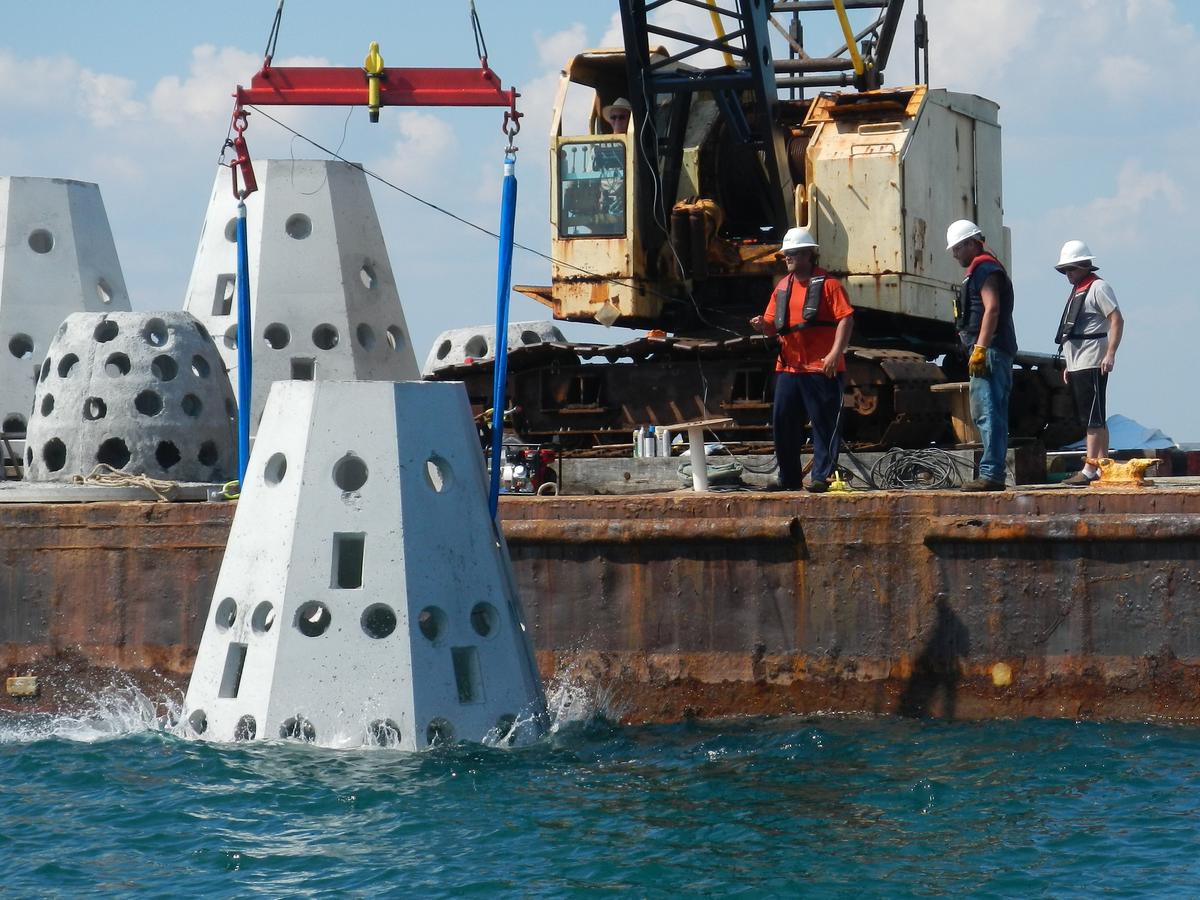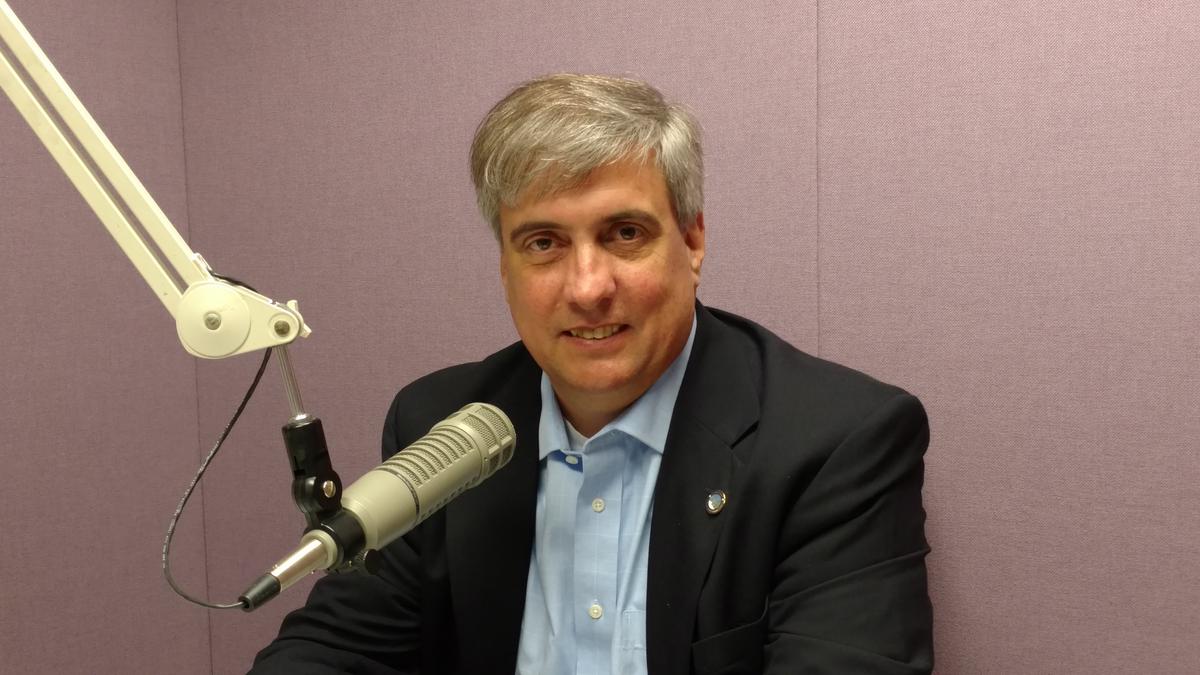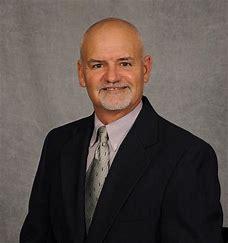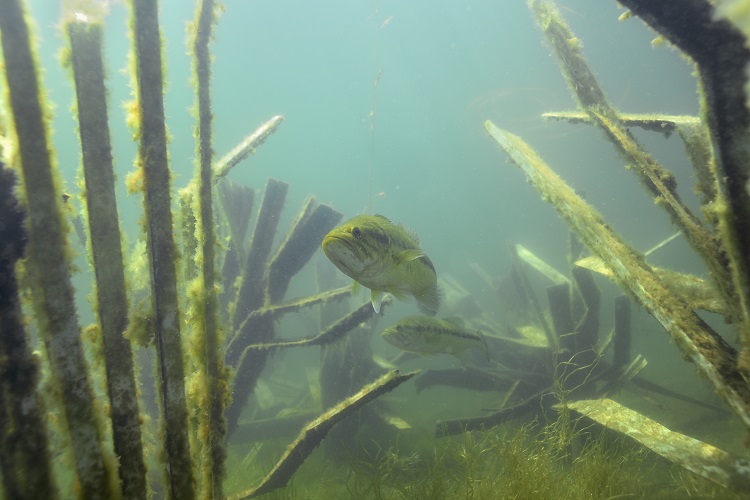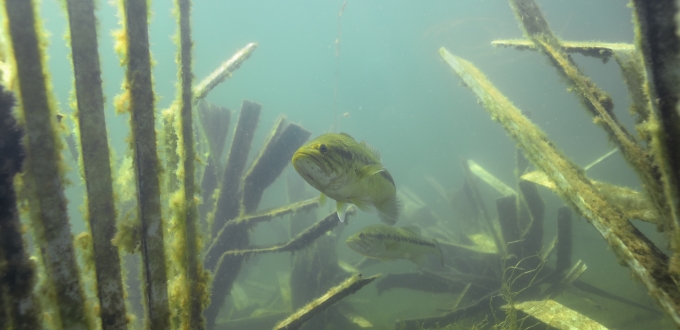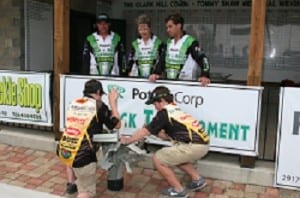| |||||||||||||||
Category: Conserv./Envrnmt
Here you can find stories and information about the environment. Conservation efforts across the nation involving all creatures. New green products available will be featured, along with helpful tips do do your part in keeping our rights to hunt and fish for future generations.
Scientists: Remove dams?
Scientists: Remove dams
‘Free-flowing’ river crucial to fish, society says
By KATHERINE WUTZ
Express Staff Writer
See the dozens of unique artificial fish habitat models, fish attractors and fish cover used at fishiding.com, the industry leader and only science based, man made and artificial fish habitat, proven to provide all fish with cover they prefer to prosper.
The world’s largest organization of fisheries scientists has added its voice to the chorus of conservationists calling for the removal of four dams on the Lower Snake River to speed the recovery of wild salmon and steelhead.
The Western Division of the American Fisheries Society, an organization whose mission is to protect fish habitat nationwide, passed a resolution on Monday that called for the federal government to take a more proactive stance on removing the dams.
“If society at large wishes to restore Snake River salmon, steelhead, Pacific lamprey and white sturgeon to sustainable, fishable levels, then a significant portion of the lower Snake River must be returned to a free-flowing condition,” the resolution states.
The dams are under fire because of their role in blocking salmon and steelhead runs and increasing mortality of fish travelling to and from spawning grounds in the Columbia River basin and beyond. But according to the Bonneville Power Association, the dams are necessary to meet demand for electricity throughout the Pacific Northwest in peak seasons.
New Man-Made Reefs Heading To Gulf Floor
More than 700 new artificial reefs are going into the waters off Pensacola in the next few months, in phase two of a program funded by the BP settlement of the 2010 oil spill.
According to the Florida Fish and Wildlife Conservation Commission, for every dollar spent on artificial reefs in the Florida Panhandle, the conservative overall economic benefit is roughly $138.
“We’ve been trying to do this the whole time I’ve been on the [Commission]; actually, even before I got on the Board Escambia County had taken a fairly aggressive position on reefing,” said Escambia County Commissioner Grover Robinson, who chairs the Gulf Consortium, 23 Florida counties affected by the Deepwater Horizon explosion and resulting oil spill.
The money’s coming from the Natural Resource Damage Assessment, NRDA, which is aimed at compensating for environmental damages in those counties.
“When NRDA came about, Escambia County residents lost the whole spring and summer of fishing [in 2010] due to the oil spill,” Robinson said. “That we knew there was something that we needed to do to compensate those individuals.”Not just the people that commercially fish; but also our recreational fishers.”
Dropping artificial reefs off the coastline is going beyond Escambia; Santa Rosa, Okaloosa, Walton and Bay Counties also have programs. Robinson calls it a “common thread” across northwest Florida to build habitat that can translate into more tourist revenues.
“Not only do you have the tourist dollars that come from the actual charter on your boat going out with people and doing the fishing, you have the supplies they buy; the tackle, the line, the rods, the reels,” said Robinson. “But more than that, you also get the hotel stays; they eat, they usually stay here.”
Two local firms will share $2.2 million in NRDA money to build the reefs. Walter Marine of Orange Beach will get $1.7 million to provide 77 large tetrahedron, or triangular pyramid, reefs, and about 300 smaller reefs. Coastal Reef Builders of Pensacola will use $531,000 to build 350 large dome reefs.
“We’re ready to go,” Robinson says. “We’re ready to get them working and hopefully there will be great opportunities for us to expand our fishing and for people to get out on the Gulf.”
“The end of the contract is June of 2019; however, it’s very likely that the construction will be completed well before that cutoff date,” said Robert Turpin, Escambia County’s Marine Resources Director. He says the structures will help increase fish populations using 21st century materials and deployment techniques.
“Cured concrete that is stable and durable,” said Turpin. “Some of this has limestone that is actually embedded into the concrete, which provides for a more natural sub-strait for attaching and boring organisms.”
As part of the project, there also will be an upgraded interactive map of area reef sites showing both reef modules and shipwreck sites through Google Earth; and a new app for GPS units.
“We also have the coordinates in a GPX format that is available for most of the newer GPS units,” said Turpin. “Where you can simply upload the coordinates in your GPS unit, instead of the old-fashioned way where you had to literally punch in the numbers one at a time.”
Meanwhile, construction is underway at the new Three Mile Bridge site, including plans for lead contractor Skanska USA to take down the old span. Turpin is hoping that those materials can be used to improve the reefs made from the remnants of the I-10 Bridge that was replaced after being destroyed by Hurricane Ivan.
“Skanska was one of the contractors that replaced the I-10 Bridge,” Turpin said. “So they know reefing of those materials is fast. And we’ve made it even faster, more efficient, therefore cheaper for them to do the same thing with the Three Mile Bridge rubble.”
As mentioned, Santa Rosa County is also building its reef program. According to the Pensacola News Journal, the county has about $1.2 million in the bank for additional modules at a snorkel reef off Navarre.
Ottawa pledges $284 million to expand protections for fish habitats
Ottawa pledges $284 million to expand protections for fish habitats

The federal government will spend $284 million over the next five years to enforce new laws protecting habitat wherever fish are present, Fisheries Minister Dominic LeBlanc says.
A number of amendments to the Fisheries Act were introduced in the House of Commons Tuesday morning to expand the reach of a prohibition against anything that alters or impacts fish habitat to all waters where fish exist.
Changes to the act in 2012 meant the protections were enforced only for fish listed in provincial registries as being part of commercial, recreational or Indigenous fisheries.
Officials with Fisheries and Oceans Canada said in Ottawa today the 2012 changes resulted in a lot of confusion about exactly what projects would require a federal government assessment, because it wasn’t always clear which fish needed protecting and which didn’t.
The government intends to produce regulations that will spell out exactly which projects will require a federal assessment and ministerial permit to proceed and which will not. The department is consulting on those regulations now.
As well, any reviews done will be captured in a public registry so the public can see the results of every review, something that is not required now.
The act also will require the minister to take into account Indigenous knowledge and expertise when it is provided and all decisions must take into account the possible impacts on Indigenous rights. However that knowledge will be protected from being revealed publicly or even to a project’s proponents without explicit permission from the Indigenous community or people who provided it.
The $284 million will be allocated to help implement and enforce the new law, including hiring new fisheries officers to enforce the act and educate people about it, however officials say there are no details yet about how many will be hired and when.
The legislation also will make it illegal to capture whales, dolphins and porpoises in Canadian waters for the purpose of keeping them in captivity. Officials say existing permits for such activities will be honoured, but in the future only animals captured because they are in distress, injured or in need of care can be held in captivity in Canada.
The amendments to the Fisheries Act are part of a package of government changes to the federal environmental assessment process and fulfills a mandate item issued to LeBlanc when he became the minister.
The bill will be followed later this week by another one that will overhaul the National Energy Board, as well as revise the Navigable Waters Protection Act.
Martin Olszynski, a University of Calgary law professor who worked as a lawyer for the Department of Fisheries and Oceans between 2007 and 2013, said the 2012 changes made to the Fisheries Act differentiated between fish that matter and fish that don
“More substantively, it signalled to a lot of people in Canada that suddenly this prohibition didn’t matter,” Olszynski said. “So you had what was already a very under-regulated issue which impacts fish and fish habitat mostly as a result of resource development becoming that much less supervised.”
He said after the act was introduced the number of projects referred to Fisheries and Oceans Canada for assessment was cut in half. Officials expect the number of referrals and project reviews will go back up, but they said it’s too early to say how many more assessments will be done.
There have been between 80 and 400 reviews in recent years. Lots more habitat news at fishiding.com
The government has been studying these changes since 2016, with online consultations, meetings with Indigenous communities and governments and a study by the House of Commons fisheries committee.
St. Johns water district board member on boat ramp
Despite millions in taxpayer investment and 10 years of construction, the public is still fighting for access to a manmade lake in Fellsmere. LUCAS DAPRILE/TCPALM Wochit
“Git ‘er done.”
Did he really say that?
Yep. The full context of what he said was actually, “Smoke a peace pipe and get ‘er done. Let’s get this thing done.”
“He” was Doug Bournique, a member of the St. Johns River Water Management District governing board since 2008. He was speaking during the board’s regularly scheduled monthly meeting to receive status updates on district projects and conduct its business.
He was talking about a boat ramp. One conceived by district staff as long as 11 years ago, but has yet to become a reality.
The good news is, Bournique’s urging was music to the ears of freshwater sportsmen. The wait is coming to an end. The bad news is, that still may be more than a year.
It’s how things get done in state government. Not exactly fast.
Bournique was not doing an impression of Larry the Cable Guy. He was directing district staff to resolve the lack of a boat ramp at Fellsmere Water Management Area.
More: Fellsmere Water Management Area boat ramp should be done in a year, water district says
Already, $104 million of state taxpayer money has been poured into the 10,000 acre reservoir. The hold up has been closing the deal on one more 5-acre parcel on the water body’s northeast corner. It’s the preferred location, says the district, for placement of a concrete boat ramp and dock, paved parking area and restrooms.
The ramp area, called “Access Point 1” in district documents, would be a little under two miles east of where the Fellsmere Grade Recreation Area (what everyone calls the Stick Marsh) parking lot and facilities are.
The important news you want to read is this:
- Negotiations with private landowner Fellsmere Joint Ventures are underway, and according to district projects chief Rob Zammataro, “are going very well.”
- Negotiations must be completed by end of the month, or else the district will begin working on placing a boat ramp at “Access Point 2,” the northwest corner of the reservoir where there is already parking and facilities for Stick Marsh and T.M. Goodwin anglers and hunters.
- There is a deadline of April 3 the district is trying to meet in order to apply for a Florida Boating Improvement Grant provided by the Florida Fish and Wildlife Conservation Commission.
- Once the district knows which site it will begin developing, it can begin budgeting for $550,000 in project costs for AP1 or an estimated $800,000 is site AP2.
- Site AP 1 could be completed in a year, Zammataro said, while AP2 may take longer because of permitting requirements and application and approval deadlines.
Fishing Hole
Anglers who fish from paddleboards and kayaks have been enjoying world class fishing action, when the bite is on. Peter Hinck of Sebastian, known to many on his YouTube Channel Palm Beach Pete, fished there two days this week. Friday, he caught and released 50 bass using D.O.A. Cal Swim Bait in the figi chix color while fishing from his Dragonfly Boatworks stand-up paddleboard.
The main enhanced zone for fish habitat is closer to the southern end of the 7-mile long lake. Even Hinck, an advanced paddler, admitted he couldn’t go that far. As for now, the only access points are on the northern shoreline. The edge of the best enhancements are nearly five miles away. The additional habitat information is at fishiding.com
Soon, paddlecraft anglers are going to have to begin sharing this fishing hole with bass boats headed out for catch and release trophy fishing. Pontoon boaters will be heading out, too, to catch speckled perch, bluegill and shellcracker.
Many waters
In 2007, the district began work to acquire former citrus, row crop and pasture land from Fellsmere Joint Ventures, the company once headed up by Bernard Egan, the patriarch of a longtime Indian River County agricultural family. The company still operates and leases its land to ag and other businesses, and holds development rights for what could one day become hundreds of home sites.
As for the reservoir, the water management district describes it as one of the largest projects it has ever taken on. It has transformed the land into what the district describes as a “multi-function reservoir.”
More: Costly Fellsmere Water Management Area in IRC falls short for some
The reservoir is needed to serve “water supply and flood control purposes, redirect water from discharging into the Indian River Lagoon and into the St. Johns River, and help improve the water quality of agricultural and surface water drainage,” according to a district status update. Working in conjunction with the Florida Fish and Wildlife Conservation Commission, the agencies were able to also create a world class fishing destination in the process.
While recreation is an important component of the $104 million (so far) project, it is not it’s first priority, explained Rob Zammataro, district projects chief.
“Reservoirs are used for four separate things,” he said. “Sometimes combining four uses into one water body can be a challenge and there could be conflicting aspects. It’s pretty unique. It also reduces the withdrawals of water from the aquifer.”
Get ‘er done
As for Tuesday’s meeting, Bournique and district general counsel Bill Abrams seemed enlightened. Bournique said the district should pursue both ramp options equally and to FJV, obtain “quick resolution of their issues. Whatever works. I think it’s in the best interest of this district to move forward and get a boat ramp going.”
Board chairman John Miklos directed staff to have an actionable item on the boat ramp ready for its next governing board meeting, March 13. By then, we’ll know which option boaters can begin looking forward to.
Either way, I’m with Doug. Let’s just get ‘er done.
Recreational meeting
What: ??St. Johns River Water Management District recreational use meeting
When: 6-8 p.m. Thursday
Where: 525 Community College Parkway S.E., Palm Bay
Ed Killer is the outdoors columnist for Treasure Coast Newspapers and TCPalm.com, and this column reflects his opinion. Friend him on Facebook at Ed Killer, follow him on Twitter @tcpalmekiller or email him at ed.killer@tcpalm.com or call him at 772-221-4201.
ARTIFICIAL FISH HABITAT OR FISH ATTRACTORS, WHICH DO THE FISH NEED AND WHY?
First off, let’s not continue to confuse fish habitat with fish attractors. There are many substabtial differences between the two and what each product is intended for. Both products attract fish, but only habitat holds the future of fishing.
Under the Fisheries Act, fish habitat is defined as: “Spawning grounds and nursery, rearing, food supply and migration areas on which fish depend directly or indirectly in order to carry out their life process. (Fisheries Act Section 34(1))”.
Artificial fish habitat as defined above, is simply habitat that is man made with materials not found in nature. Although made from mainly plastics, the intended goal is absolutely the same. Reproduction and protection of more fish.
The planting of native aquatic plants, installing brush, rock, deadfalls and timber would be considered supplemental natural habitat. These types of materials succeed in replacing natural materials that have decayed or have been lost to siltation, erosion and development, but were once present.
Artificial fish attractors attract larger fish and little more, accomplishing the intended task as designed. Open in design and able to see through, generally tubes and sticks that are easy to get fishing lures around, they attract larger fish to a designated area for a short time in transition between cover, made for fisherman to enjoy. One job well done when placed and designed in such a manner that the desired species of fish feel comfortable using it. More at fishiding.com
NFWF awards Seneca Nation grant to stabilize shoreline, creating fish habitat across miles of the Allegany Reservoir
Silt and sedimentation are clogging our nation’s waterways and reservoirs. Years of fluctuating water levels, erosion, development, nutrient loading and decomposition of natural materials, have put these waters in dire need of improvements. Fish habitat, which includes habitat for countless other equally important aquatic organisms, lacks to the degree on many U.S, waters, that no amount of fish stocking can improve the fishery. Without adequate habitat, the fish simply cannot survive.
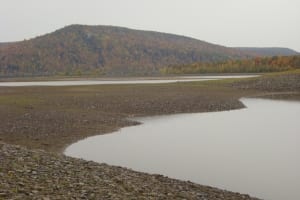
I met Shane Titus, Seneca Nation of Indians Fishery manager over three years ago as we began to talk about fish stocking, fluctuating water levels and ways of improving overall fish habitat on the Allegany River/Reservoir. Shane contacted me directly to understand more about our artificial habitat products and working together with ways to improve his local conditions. Here is a man with a unique perspective on Tribal rights as well as American U.S./State policies. Proudly having an Indian mother and Italian father, his gentle blend of both “sides”, make it evident that he is a special and highly qualified man for this job. His utmost concern is for the land, waters and the creatures within, helping sustain this natural environment, which breathtakingly surrounds himself and his people in western New York.
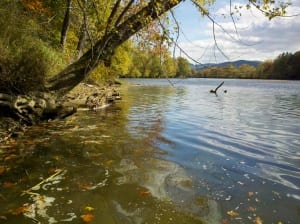
Shane understands the benefits of adding habitat. He has installed habitat structures in the reservoir for many years and has a quite impressive reputation as a fisherman. “Because the reservoir is so lacking of good habitat, almost anything you add will usually hold some fish.” Prime habitat for all animals, including fish, focuses around diversity. All of the same is rarely best, no different than we humans see things. A less stressful environment grows healthy beings and fish health also is directly related to the stress they encounter surviving from fry through adulthood.
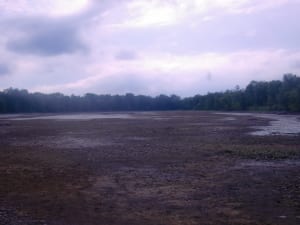
To best understand a healthy fish habitat, imagine a large tract of mature hardwood forest, noticing the plants from tiny grasses and ferns, up to shrubs, bushes and trees. Countless shapes, textures, densities and elevations provide unlimited choices of surroundings, depending on creatures needs. Tiny bugs and insects, utilize the fine forest floor, hiding and grazing on the abundant food available. Birds eat berries and some of those bugs, from the lower branches of bushes and undergrowth, while they defensively watch for danger from above or below. Deer, rabbit, and other small game enjoy the shade from the undergrowth as they hunt or rest. The bigger the tract of forest, the more variety and abundance animals it can/will sustain. Fish habitat is no different than a mature and healthy forest, requiring infinite variety to support diversity and abundance.

Increasing fish habitat groupings on a large scale creates unique areas and corridors for fish to flourish and increase in numbers, not simply attracting a few fish to the area for potential fisherman/predator fish to enjoy. The surface area of the habitat grows the food (periphyton) with more area being best and essential to a healthy eco-system. Tight, dense shaded areas are essential for small fish to hide and graze within the protection the substrate offers. Dense, ultra-fine cover at the water’s edge restores the once healthy mass of roots and aquatic plants, grasses and invertebrates that young fish need. Natural weed beds and large rocks once provided this surface area for periphyton and algae to grow, but now they have been lost to sedimentation.
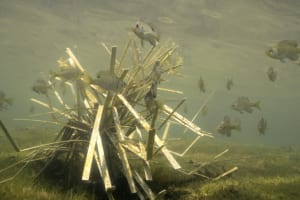
Titus was instrumental in obtaining a grant to help construct a new fish hatchery on the Reservation a few years back, which is now pumping out walleye and smallmouth fry annually for the Allegany.
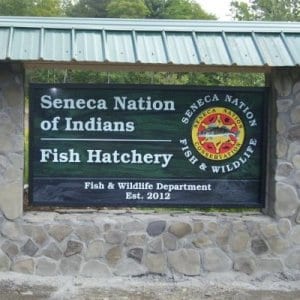
His next goal was to get the financial help needed to begin to reclaim areas of the Allegany Reservoir that had been degraded. “We have almost no shallow cover left for the fry, due to erosion and siltation. Bays that lock in fish as they lower the water levels, killing everything left. We need to scoop that stuff out so they can navigate in and out like they used to be able to.”
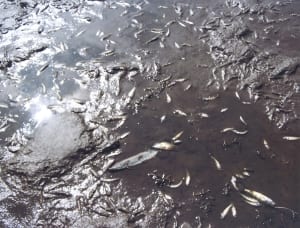
As Shane continued to follow up on applications for various grant opportunities, our plans to work together to improve conditions on the Reservoir within the Reservation began to take shape. In late summer of 2014, notification was received of a grant award to the SNI from the National Fish and Wildlife Foundation being part of the Hurricane Sandy Coastal Resiliency grant funding. I got the call from Shane that his application was approved and how he was not only grateful, but quite humbled. “Our people could never have been able to afford and accomplish so much, so quickly, on a scale of this size. This will make a huge, positive impact on the fishery across miles.”
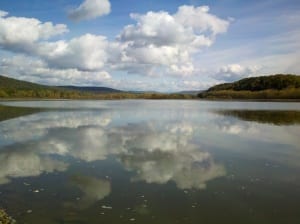
Plans were made to drive the 600 miles out to review the site, along with numerous models of our Fishiding artificial habitat. Decisions were to be made as to which artificial habitat models would be best, where the grouping would go and the overall quantities involved.
Fishiding.com produces artificial fish habitat from reclaimed PVC vinyl siding contained in a weighted base. Models from 18” tall up to 15 feet create unlimited variety, textures and densities of cover, creating a truly natural underwater landscape for aquatic life to thrive within. Over 2300 units consisting of five different models were selected totaling over 64,000 sq. ft. of surface area, ranging from 48”x84” to 18”x30” in size.
Means being used to document the habitats ability to provide sustainable habitat and deter erosion are by way of sonar equipment, water quality testing, underwater cameras and scuba certified staff. We (SNIFWD, USACE, USFS, and PAFBC) will be looking for signs of life such as invertebrates, algae growth, insect life, eggs of all life (insects, fish, amphibians, etc.) and any species of fish utilizing the habitat for shelter and food for research purposes and decision making for future habitat projects.
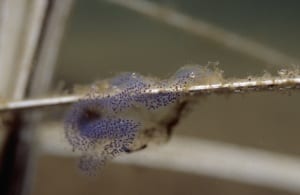
“It’s a no brainer as I see it,” said Titus. “Using this safe, durable, long-lasting material for fish habitat instead of buried in landfills, is a win for the people, fish and the environment. We can grow that stuff right into the shoreline, creating fry habitat and stabilizing the bank at the same time. We can plant them like balled bushes and watch them grow with life each year.”
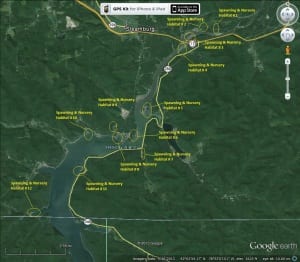
I was welcomed by Shane and the team of conservation officers at the Fish and Wildlife Department who proudly work to sustain this pristine land they call home. A first-hand view of the Reservoir in November, Shane showed me the areas that we had talked about, in dire need of restoration.
We walked the river edge, casting jigs for some feisty walleye and smallmouth, catching a few and releasing them back to swim away. “ I keep a couple here and there, but they still feel like my babies” Shane explained, after raising and releasing hundreds of thousands of fry from the SNI Hatchery facility he operates on the Reservation, releasing them into the Reservoir. He showed me areas devoid of cover, after erosion and low water had worn away the plants, depositing sediment where rock/rubble once exposed. Huge bays landlocked, explaining how many fish die each year, being stuck with no way out as water levels drop, despite volunteers and staff netting and saving thousands of fish each season. Water marks so high, trees and plants were washed away, only to leave the water’s edge barren for fish to contend with in the spring as they attempt to successfully spawn.
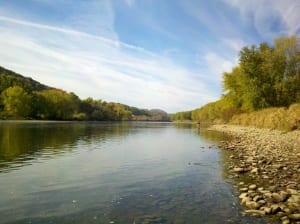
Needless to say, excitement grew with the dream of being able to work along the river on a very large scale. To install thousands of individual habitat units creating tens of thousands of square feet of surface area would boost the fishery measurably. Concentrating on shoreline stabilization and fry recruitment, all targeting depths from 6 feet of water and under for the little fish, bugs and plant growth. Another additional benefit of large groupings of habitat is the excrement discarded by the fish and creatures that inhabit it fertilizing plant growth. Clearly aquatic growth, grass and weeds take root in the surrounding lake floor, being fertilized by the fish from above. Another win-win for the fish and the environment.
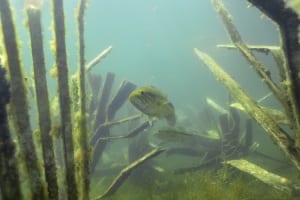
Project Abstract
The goal of this funding through established partnerships with the PAFBC, USFS, ACE will be to restore the habitat within the reservoir and create an enhanced water system that can tolerate high water events with minimal loss to wildlife and habitat.
The Seneca Nation of Indians has a long history of struggling to maintain its land base and yet there remains a unique and harmonious relationship between indigenous people and the concept of environmental sustainability. The Seneca people believe fully in the tenet of their forefathers, that everyone must plan for the future generations, up to and beyond the seventh generation. The current conditions that exist within the Allegany Reservoir create an intolerable struggle within the people as they are forced each year after year to witness thousands of fish dying, species disappearing or become species of concerns, a vital wildlife habitat lost. Over the past 60 years this reservoir has had numerous high water systems into the reservoir, suffocating aquatic species. Each event results in species lost, habitat lost, channels filled and community flooding.
The people of the Seneca Nation live and work on the same lands today that the Seneca people have inhabited for over 1000 years. The Seneca Nation holds title to five distinct but non-contiguous territories located in western New York, an area of the state where communities are primarily rural in geographic location. The territories are unique in its economic, social and environmental profile. With 53,884 acres, the Seneca Nation controls and holds a significant land base in western New York.
“The Allegany River/Reservoir Restoration and Resiliency Project”
Objectives/Outputs/Outcomes:
- Create a healthier habitat for aquatic species within the Allegany Reservoir
- 10 acres will receive in stream habitat restoration efforts.
- 50 acres will benefit from artificial and natural habitat structures.
- Enhance the flood plain and habitat restoration of the Allegany Reservoir through riprarian buffer restoration.
- 18.94 miles will have large debris removed from shoreline area.
- 10 acres will receive indigenous plantings.
- Restore hydrology to land locked areas of the Allegany Reservoir.
- 7 land locked areas will be reconnected to the Allegany Reservoir.
- 15 acres will be cleaned of sediment, silt and nutrients.
The habitat has been delivered and equipment is in place. Over the next two years, Shane and his team will work all year around, improving the many areas covered within the grant. A great deal of the work will be during the winter months, when water levels are down and lakebed areas exposed. The team will use an earth auger to drill/install the many pole clusters to be installed to regain a plant base in the many washes, streams and creeks flowing into the reservoir. These barriers will catch debris during runoff, creating a medium for plants to begin to take hold. Dozers, trucks along with a good amount of manpower will begin to remove the 1000’s of cubic yards of sediment from the bays and openings, allowing the fish to again, freely pass.
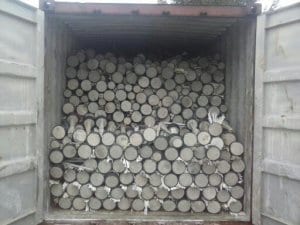
The artificial habitat units will be planted individually in shallow, drilled holes and backfilled like a balled bush. Planted in large clusters, these units will become exposed each year as the water levels drop in the fall, but take on new life each spring as water levels rise and fish move in to seek spawning protection. Not only will the shallowest models protect fish, but allow shoreline plants and their roots to attach and take hold, strengthening and buffering the eroded shallows. With this substrate in place, only good things follow.
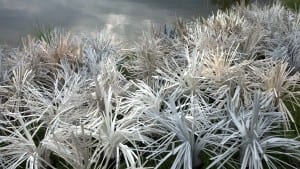
Late in 2014, the Seneca Nation hosted its third annual “Allegany Reservoir Management Meeting”. Agencies that are represented at these meetings are: SNI Fish and Wildlife, SNI Administration Representatives, Pennsylvania Fish and Boat Commission, New York State department of Environmental conservation, US Army Corp of Engineers, ( KInzua staff, Pittsburg District), US Fish and Wildlife Service (Tribal Liaison, Great lakes rep., Hatchery Lamar PA, and Hatchery Kinzua PA), US Forest Service and California University of Pennsylvania. Topics discussed at these meetings are all the topics mentioned in the grant, plus stocking strategies, fish sampling surveys, fish pathology and funding opportunities. These “first of their kind” meetings are a shared water body being managed as a single water body.
Aquatic species that will benefit from the habitat are: Walleye (tribally significant species to Seneca culture and heritage) Smallmouth Bass, Large Mouth Bass, Black Crappie, White Crappie, Paddlefish (endangered), Northern Pike, Muskellunge, White Bass, Yellow Perch, Bullhead, Channel Catfish, Sunfish, Rock Bass, Sucker, Emerald Shiner, Golden Shiner, Fathead minnows, Spot Tail Shiner and Bluegill, Fresh Water Jelly fish, Aquatic spiders and Macro invertebrates.
Wildlife also benefitting from the habitat: Bald eagle, Golden Eagle, Cormorants, Loons, Ducks (all species), Canadian Goose, Osprey, Green Heron, Blue Heron, Snapping Turtle, Painted Turtle, Leather Back Turtle, Hellbender (amphibian, species of concern) and River Otter (species of concern)
Increased stewardship among the Seneca community will be an immeasurable benefit of this project. The SNI Fish and Wildlife Staff provide educational programs directed at youth to teach them about the environment and its importance to the health of all fish and wildlife. The SNI Fish and Wildlife Department plans on using these projects to create a three year educational tool for the youth and general public. The Seneca nation newsletter will be doing periodic articles to keep the public informed and involved in all aspects of the projects, to include the purpose, reasons, and outcomes of the work.
For more information regarding Reservoir habitat restoration, funding and other projects taking place, visit Friends of Reservoirs, which SNI Fish and Wildlife and Fishiding strongly support. Friends of Reservoirs (FOR), is a tax-deductible non-profit foundation dedicated to protecting and/or restoring fisheries habitat in reservoir systems nationwide. FOR is the funding arm of the Reservoir Fisheries Habitat Partnership, an organization of natural resource professionals and industry representatives, associated with the National Fish Habitat Partnership. FOR is also a coalition of local citizen groups dedicated to improving fish habitat in reservoir systems. David Ewald/ Fishiding.com
Underwater photography by Eric Engbretson, all rights reserved. For a complete library of Fishiding habitat underwater in various locations and conditions see Eric’s work here. Watch for much more information, photos and reports as this project gains momentum. We will be making many trips back to see Shane and his crew improving conditions on the Reservation. Fishing poles and tackle must be present for “testing”.
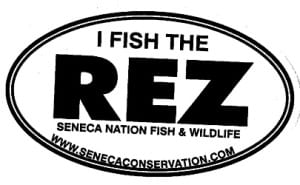
Fishing Tournaments that Produce more Fish with Habitat
“Fishing Tournaments that Produce more Fish”
“Catch and Create” Habitat Improvement Tournaments by Fishiding.com
Can you compete and still be on the same team? We all want improved fishing and habitat is the key. Think of how many Bass, Crappie and Walleye Tournaments are held ………….more
Eagle Scout wins award with artificial fish habitat
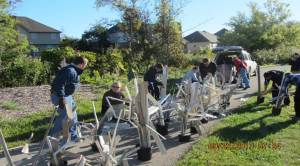
In the far Northwest suburbs, away from the fast paced city of Chicago, a 17 year old boy loves the outdoors and fishing. This outdoor lifestyle in our youth is alive and well in our Nation, thanks in part to The Boy Scouts of America. As our world changes at this alarming rate, Scouts continue to build boys into men with ethical, honest and life building challenges. More habitat articles at fishiding.com
The dedication to study, practice and ………….more
Insufficient fish habitat protection threatens Alaska’s valuable fisheries
By LISA WEISSLER
FOR THE JUNEAU EMPIRE
The public interest is no longer being served by Alaska’s natural resources permitting system. When it comes to state resource development decisions, too little voice is given to Alaskans, project reviews are fragmented, local and tribal governments are sidelined, and too much power is concentrated in the executive branch, particularly the Department of Natural Resources.
Resource development projects often involve multiple activities, such as road and facility construction, water use, and material extraction. Each activity requires permits from different divisions within each resource agency. Since permitters act on their permitting authority separately, project reviews are piecemeal, and only public comments related to each individual activity are considered. There is no opportunity to analyze a project as a whole. DNR coordinates large project reviews such as large-scale mining, but this is done mostly as a service to applicants who pay for the privilege. More habitat articles at fishiding.com
Under the Alaska Coastal Management Program, local governments played a significant role in working with the state and federal government on the best way to resolve conflicts between competing resource uses and local values. But with the termination of the program in 2011, local governments are now accorded no more deference in development decisions than the general public.
Insufficient fish habitat protection threatens Alaska’s valuable fisheries. The Department of Fish and Game has just two laws specific to fish habitat, one that prevents obstructions in fish-bearing streams and one requiring Fish and Game approval prior to work in salmon streams. The defunct coastal program addressed other important fish habitat outside streambeds, including estuaries, offshore areas and tideflats. Now, fish habitat protection is mostly within DNR’s discretion as part of their land use permit.
Fish and Game is in the process of changing its special area management plans so that rather than prohibiting certain activities in special areas, the department will have discretion to permit activities without public notice. They also intend on putting multiple plans into a single review packet for public comment once a year, limiting the amount of public engagement on local issues.
Recently passed legislation allows DNR to hold a public notice and comment period only once every 10 years for oil and gas exploration or development in multi-million acre areas. People will be required to comment without knowing the when, where, how, or what kind of exploration or development might occur in or near their community.
The courts are the last check on overreaching executive power. But that’s under threat as well. Gov. Sean Parnell recently brought a lawsuit against respected statesman Vic Fischer and former First Lady Bella Hammond for their public interest challenge of Pebble mine activities.
And things could get worse. House Bill 77, currently pending before the Legislature, will concentrate even more power in the DNR commissioner and further fragment project reviews. It will also make it harder to appeal DNR decisions in court.
Then there’s Administrative Order 266, recently issued by the governor to establish regulatory “efficiency” guidelines. This may result in resource agencies loosening regulatory requirements, such as public notice, to reduce costs for developers.
We need our legislators to act as a check on this overreach of executive power. They should stop or substantially change HB 77, and pass legislation enforcing an Alaska Supreme Court ruling that DNR has a constitutional duty to analyze and give public notice on cumulative impacts of oil and gas projects. The Legislature should also conduct oversight hearings on resource agency regulation changes proposed under Administrative Order 266.
Other ideas to protect the public interest in permitting decisions include:
1. Providing for coordinated project reviews that give the public and local governments the opportunity to analyze projects as a whole.
2. Giving local governments deference on issues of local concern.
3. Increasing statutory fish habitat protection.
Residents can act as well. Tell your legislators you want this administration’s power grab stopped, and help elect a governor who values Alaskans and local and tribal governments as partners in the development of this great state. Contact your legislator, vote, and make your voice heard.
• Lisa Weissler is an attorney with expertise in natural resource law and over 20 years experience with the State of Alaska. She has worked thirteen sessions for the Alaska state legislature; served as an assistance attorney general specializing in oil, gas and mining law and coastal management; and as a special assistance for the Department of Natural Resources and a project analyst for the Alaska coastal management program. She was the policy director for the coastal management program initiative and is currently providing natural resource law and policy consulting services.

